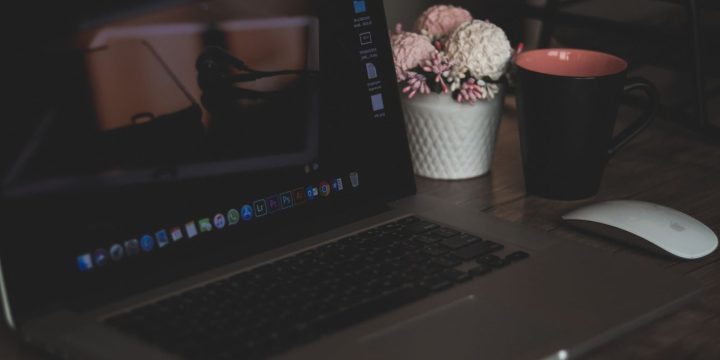The Touch Bar on a MacBook Pro is one of Apple’s most creative features. It replaces traditional function keys with a digital strip that changes based on what you’re doing. However, it sometimes starts flickering, freezing, or stops responding completely.
If your Touch Bar looks strange or doesn’t react when touched, don’t panic. Most glitches come from software bugs, not hardware damage. This guide explains the cause of the problem and provides step-by-step instructions on how to fix it.
What the Touch Bar Does and Why It Glitches

The Touch Bar is a mini display controlled by macOS. It lets you change brightness, volume, or app options instantly. Like any software feature, it can run into bugs or crashes.
Here are the most common triggers for Touch Bar glitches:
- Outdated macOS or corrupted system files
- Heavy apps using too much memory
- Display or logic board issues
- System management conflicts
- Overheating or power problems
When these things happen, the Touch Bar might flicker, go blank, or respond slowly.
Common Causes of Touch Bar Problems
There are two main categories of issues – software errors and hardware faults.
Software-related causes include macOS bugs, cache errors, or memory overload. When system processes freeze, the Touch Bar can stop updating in real time. Some third-party apps also interfere with Touch Bar animations or shortcuts.
Hardware-related causes come from faulty connectors or a damaged display cable. These problems are less common but can happen on older Intel-based MacBook Pros.
Another factor is heat. When your MacBook gets too hot, macOS sometimes disables non-essential functions – including the Touch Bar – to protect hardware.
Quick Fixes for a Frozen or Flickering Touch Bar
You can often fix the problem with a few quick steps. Try these solutions first:
1. Restart Your MacBook
A basic restart solves many temporary glitches. It clears background errors and refreshes macOS processes that control the Touch Bar.
2. Force Restart the Touch Bar Process
If restarting doesn’t help, you can manually refresh the Touch Bar using Activity Monitor. This restarts the background service that powers it.
Steps:
- Open Activity Monitor from Applications → Utilities.
- In the search bar, type Touch Bar agent.
- Select it, then click the X button to quit the process.
- The Touch Bar will restart automatically within seconds.
This method is quick and often fixes flickering or unresponsive behavior.
3. Update macOS
Outdated software can cause compatibility issues that make the Touch Bar act up. Updating macOS ensures you have the latest fixes and firmware.
Go to System Settings → General → Software Update and install any available updates. Once the update finishes, restart your MacBook.
4. Reset the System Management Controller (SMC)
The SMC controls power, battery, and temperature on your Mac. If it malfunctions, it can affect the Touch Bar’s response.
To reset it, shut down your MacBook, then press and hold Control + Option + Shift (on the left side) and the Power button for 10 seconds. Release all keys, then turn your MacBook back on.
5. Reset NVRAM or PRAM
Resetting NVRAM/PRAM can fix display and hardware communication problems linked to the Touch Bar.
To do this, shut down your MacBook, then hold Option + Command + P + R while turning it back on. Keep holding the keys until you hear the startup sound twice, then release them.
These steps fix most software glitches that make the Touch Bar unresponsive or blank.
Advanced Fixes Using Terminal or Safe Mode
If the Touch Bar still doesn’t work, try restarting its service through Terminal.
Open Terminal and enter this command:
sudo pkill TouchBarServer; sudo killall ControlStrip
Press Enter, then log out and back in. This manually restarts the Touch Bar interface.
If the issue continues, restart your Mac in Safe Mode. This disables third-party extensions and lets macOS check for software conflicts. If the Touch Bar works fine in Safe Mode, one of your apps may be the cause.
When to Contact Apple Support
If the Touch Bar still flickers, remains black, or fails to appear at all, it may be a hardware issue. You might need professional help from Apple Support or an Apple Store.
Contact Apple if you notice:
- The Touch Bar doesn’t light up even after resets
- It flickers or turns off under pressure
- macOS doesn’t detect it in diagnostics
Apple technicians can test your logic board and display connection to confirm the issue. If your MacBook is under AppleCare, the repair may be covered.
How to Prevent Future Touch Bar Issues
You can avoid future glitches by taking care of your MacBook and keeping the system clean.
- Keep macOS updated regularly.
- Avoid overheating your device by using it on hard surfaces.
- Don’t install unverified apps that affect system settings.
- Restart your MacBook weekly to clear memory.
- Clean the keyboard and Touch Bar area gently with a microfiber cloth.
Regular maintenance helps prevent crashes and keeps the Touch Bar responsive.
Final Thoughts
The MacBook Touch Bar is a helpful feature when it works right. Most glitches come from software issues that are easy to fix with restarts, resets, or updates.
If those steps don’t solve the problem, Apple Support can handle the rest. A few minutes of care can make your Touch Bar feel brand new again.

